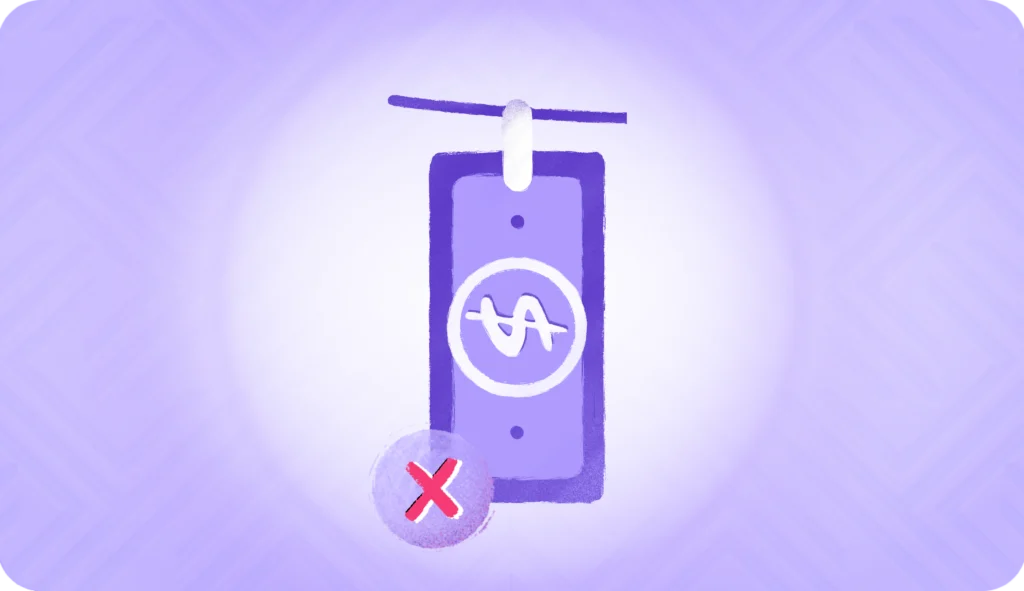When you hear the word “crime,” you might picture a dramatic bank heist or a violent street altercation. But what about the executive in a tailored suit who embezzles millions from their company? Or the tech whiz who manipulates cryptocurrency markets for personal gain? These are examples of white-collar crime—a sophisticated, non-violent form of wrongdoing driven by financial motives, often committed by individuals in positions of power, trust, and influence.
The term “white-collar crime” was coined in the 1930s by Edwin Sutherland, a pioneering sociologist and criminologist. Sutherland sought to challenge the prevailing stereotype that crime was a problem confined to the lower classes. Instead, he shed light on the illegal activities of high-status individuals—CEOs, politicians, and professionals—who exploited their access to resources and opportunities for personal gain. Interestingly, Sutherland’s groundbreaking work faced significant pushback and censorship, largely due to the involvement of powerful corporations and elites who preferred to keep their misdeeds out of the public eye.
Fast forward to today, and white-collar crime has evolved into a global issue, with industries like financial services, fintech, cryptocurrency, and gaming being particularly vulnerable. For instance, the 2024 Alloy report revealed that 35% of banks and financial institutions experienced 1000+ fraud attempts in the last year, while 1 in 10 experienced 10,000+ fraud attempts. From insider trading and Ponzi schemes to money laundering and cyber fraud, these crimes not only result in massive financial losses but also erode trust in institutions and markets.
Consider the infamous case of Bernie Madoff, whose $65 billion Ponzi scheme devastated thousands of investors, or the recent collapse of FTX, a cryptocurrency exchange accused of misusing customer funds. These examples underscore the far-reaching consequences of white-collar crime, which can ripple through economies, destroy livelihoods, and tarnish reputations.
So, why does this matter to you? Whether you’re a business leader, an employee, or simply a consumer, understanding the tactics and motivations behind white-collar crime is crucial. By staying informed, companies can implement robust safeguards, detect red flags, and protect themselves from financial and reputational harm.
In this blog, we’ll explore the different types of white-collar crime, examine real-world examples, and discuss how businesses and individuals can guard against these ever-evolving threats.
Types of white collar crimes
White-collar crime encompasses a wide range of offences, including the following:
Fraud
Fraud refers to schemes designed to deceive individuals or organizations for financial gain. For instance, a scammer can promise a large payout in exchange for a small upfront “processing fee”. Once the victim hands over the money, the fraudster disappears.
Common frauds include securities fraud, corporate fraud and mortgage fraud. Other types entail health care fraud, commodities fraud and insurance fraud. Each criminal activity has devastating consequences for both individuals and businesses. They often result in significant financial loss, legal penalties, and long-term reputational damage.
Embezzlement
Embezzlement occurs when someone breaks the law and takes money or assets entrusted to them. Anyone in a trusted position—from an employee to a financial officer—can embezzle money. It can range from stealing small cash amounts to conducting large-scale fraud.
Across industries, high-profile cases of embezzlement have incurred millions of dollars in losses. From non-profit organizations to large corporations, it leaves businesses in financial ruin. Employees and stakeholders are also betrayed.
Here are a few examples:
- Retail industry. An employee handling daily cash deposits siphoned off funds over several months. Thus leaving the company with significant financial losses.
- Non-profit sector. A treasurer for a charitable organization redirected donations into personal accounts. This caused severe harm to the group’s ability to support its programs.
- Financial services. A trusted financial officer transferred company funds into personal accounts. This manipulation of internal systems resulted in large-scale financial damage.
Money laundering
Money laundering involves taking money obtained from illegal activities. Fraudsters then “clean” it—making it seem like it originated from legitimate sources. This financial crime often occurs in three stages. Placement refers to introducing the money into the financial system. Layering means moving it through complex transactions while integration is reintroducing clean money.
Criminal organizations use legitimate cash-based businesses to funnel illicit funds. Restaurants and retail stores are common hubs. This crime can have wide-reaching consequences, particularly for the financial and legal systems. This is because it fuels further criminal activities like drug trafficking and terrorism.
Identity theft

Identity theft is one of the most popular white-collar crimes. It involves stealing personal information, like social security numbers, to commit fraud. With the rise of digital transactions and online data breaches, it’s even more prevalent. For example, in 2019 alone, identity theft in the U.S. caused almost $2 billion in losses.
Beyond finances, identity theft can damage a person’s credit and tarnish their reputation. This financial crime can create years of bureaucratic headache as they try to restore their identity. Businesses, too, suffer from these breaches. They face costly legal battles, compensation claims, and damage to their consumer trust.
Legal framework surrounding white collar crime
Understanding the laws and agencies that combat white-collar crime is essential for safeguarding businesses and ensuring accountability.
Relevant laws and regulations
Several criminal justice laws govern white-collar crimes. They aim to prevent fraud and ensure fairness in financial and business practices. Two of the most important laws are the Sarbanes-Oxley Act and the Dodd-Frank Act.
- Sarbanes-Oxley Act (SOX). This law was passed in 2002 in response to major corporate fraud by Enron and WorldCom. These companies falsified financial records to appear more profitable. This caused massive losses for investors. The SOX Act requires companies to maintain accurate financial records. Besides, they must establish internal controls to prevent corporate fraud. It also holds corporate executives accountable for the accuracy of financial statements. CEOs and CFOs must certify that their company’s financial reports are true. If they lie, they can face serious penalties—including fines and prison time.
- Dodd-Frank Wall Street Reform and Consumer Protection Act. This law came into force in 2010, after the financial crisis of 2008. It aims to reduce financial risks and prevent another economic meltdown. It created new government agencies to oversee different aspects of the financial system. The Consumer Financial Protection Bureau (CFPB) was set up to protect consumers from unfair practices. The Dodd-Frank Act also established stricter regulations for banks and other financial institutions. It required them to have more transparent operations and a larger financial cushion to cover potential losses. One of the key features of this act is the “whistleblower program.” It encourages people to report financial misconduct. The whistleblower receives a reward if their information leads to successful enforcement.
Several law enforcement agencies are responsible for enacting these laws and protecting the public. The Securities and Exchange Commission (SEC) is one of the main regulatory bodies. It oversees the stock market. It ensures that companies follow rules when selling stocks and reporting financial information. The SEC can investigate and reprimand those suspected of violating securities laws.
The Federal Bureau of Investigation (FBI) also plays a significant role in criminal justice. They are key in investigating complex financial crimes. They often collaborate with other agencies. For instance, the SEC and the Internal Revenue Service (IRS). Together they uncover large-scale fraud, money laundering, and other white-collar crimes.
Enforcement agencies
Several law enforcement officials work together to investigate white-collar crimes. The FBI is at the forefront of this battle. They have specialized teams dedicated to investigating crimes. They look out for fraud, insider trading, embezzlement, and money laundering. These teams use advanced techniques to follow the money trail. These government professionals gather evidence and build cases against those involved in criminal activities. The FBI also works with other federal, state, and local law enforcement agencies. Together they coordinate efforts and share information.
Besides the FBI, other agencies play crucial roles:
- Securities and Exchange Commission (SEC). The SEC regulates the securities industry. This includes the stock market and companies that issue stock. It tracks financial disclosures and investigate suspicious activities. It also takes legal action against those who violate securities laws. The SEC can impose fines and ban individuals from serving as corporate officers. It also refers cases to the Department of Justice for criminal prosecution.
- Internal Revenue Service (IRS). The IRS investigates tax-related crimes, such as tax evasion and fraudulent tax filings. White-collar criminals often try to hide illegal profits by not reporting them to the IRS. They also use complex schemes to avoid paying taxes. The IRS often work with the FBI and SEC. They build cases against individuals and companies that commit financial crimes.
- Consumer Financial Protection Bureau (CFPB). The Dodd-Frank Act created this agency. It aims to shield consumers from unfair or deceptive financial practices. They investigate complaints about various issues. Predatory lending, credit card fraud, and abusive debt collection practices are some examples.
These agencies work together to enforce laws and protect financial integrity. They hold white-collar criminals accountable for their actions.
Consequences of white collar crime
Like every crime, white-collar crime leads to severe consequences that affect companies and individuals both:
Legal penalties

When someone is guilty of a white-collar crime, they could face various punishments. Depending on how serious the crime is, they might be sent to county jail, state prison, or even federal prison. Besides prison time, the person may also have to pay fines or return the money they took to the victim.
- Potential Penalties. People convicted of white-collar crimes can get fines and prison sentences. The severity depends on the crime and the laws of the region.
- Civil vs. Criminal Penalties. Civil penalties usually involve paying money. Criminal penalties can include jail time and other punishments.
Impact on businesses
Companies caught in white-collar crime scandals suffer in many ways. They often have to pay huge legal fees and fines. This can take away money that could be useful for growth or new projects. Even worse, their reputation can have lasting damage. This can scare away investors and customers, making it hard for the business to grow.
- Financial Repercussions. Companies involved in such crimes may lose a lot of money because of fines and legal fees.
- Reputation and Operations. The damage to a company’s image can last for years, affecting its ability to operate and expand.
White-collar crimes have very far-reaching consequences. Not only do they affect the business involved but also harm entire economies. A big fraud case in one country can cause problems around the world. This is because digital transactions and financial markets have shaped the modern world. Hence, these scams can shake up international markets.
Societal implications
White-collar crimes can make people lose trust in businesses and financial institutions. When people don’t trust these institutions, they are less likely to spend money. Thus slowing down economic growth and recovery.
- Public Trust: Fraud and scams make it hard for people to trust companies and banks.
- Economic Stability: When people lose trust, they spend less—which can hurt the economy.
White-collar crime cases have caused such damage that it has harmed entire communities. They have made it harder for industries to recover.
Stay a step ahead of white-collar crime
with HyperVerge’s advanced fraud prevention tools Schedule a DemoPrevention and mitigation strategies
To protect against white-collar crime, businesses must adopt comprehensive prevention and mitigation strategies.
Best practices for businesses
Implementing robust compliance programs and internal controls is essential. These measures ensure that all company operations adhere to legal and ethical standards. Thereby reducing the risk of fraud and misconduct. For instance, creating clear guidelines on acceptable behavior is key. Procedures for reporting suspicious activities and regular internal audits can deter potential wrongdoers.
Employee training and awareness
Educating employees about white-collar crimes and common tactics used by fraudsters is crucial. Regular training programs can help employees identify red flags. They’ll know what steps to take if they suspect something is wrong. For example, staff should undergo training to recognize phishing emails. They should also receive awareness about the dangers of insider trading. They must know how to keep sensitive company information secure. Employees who are well-informed are less likely to fall victim to scams. They’re more likely to report suspicious activities. Thus making them the first line of defense against internal and external threats.
Internal controls and regular audits
Implementing stringent internal controls is another vital step in preventing white-collar crimes. Internal controls are policies that ensure the accuracy and reliability of financial reporting. These procedures also safeguard company assets. Regular audits, both internal and external, can help detect discrepancies and irregularities early. These audits provide valuable insights into the organization’s financial health. They highlight areas vulnerable to exploitation. By being proactive in addressing these vulnerabilities, companies can reduce fraud. They can ensure a culture of accountability.
Regulatory compliance
Staying updated with regulatory requirements is crucial for businesses to avoid legal complications. Companies should review their policies and procedures on a regular basis. They must ensure they follow current laws and regulations. This not only helps in mitigating legal risks but also promotes accountability. For example, businesses can use compliance software to keep track of regulatory changes. They can ensure that all practices meet the latest standards. By adhering to these regulations, companies can trim the chances of white-collar crime.
Role of technology
Technology plays a pivotal role in detecting and preventing white-collar crimes. With data analytics and artificial intelligence (AI) advancements, businesses now have powerful tools. They can use such tools to track and secure their operations.
Data analytics and artificial intelligence (AI)
Leveraging advanced data analytics and AI technologies is crucial for identifying fraudulent activities. AI algorithms can analyze vast amounts of data in real-time. They detect unusual patterns and flag suspicious transactions. For instance, AI can identify anomalies. Sudden large transactions or inconsistent accounting entries could hint at fraud. Companies like Tookitaki provide comprehensive solutions for monitoring financial activities. For instance, the Anti-Money Laundering (AML) suite and the Anti-Financial Crime (AFC) Ecosystem. These tools use machine learning to learn from past data. Thus improving their ability to predict and prevent fraudulent behavior over time. By automating the detection process, businesses can intervene immediately. This stops potential fraud before it escalates.
Fraud detection software
Many software solutions are available to help businesses detect and prevent fraud. These tools can track transactions and analyze employee behavior. They even assess risk factors in real-time. HyperVerge uses machine learning and AI to verify identities and ensure regulatory compliance. We reduce the risk of fraud during customer onboarding and other business processes. These tools are invaluable in industries with a high risk of fraud. For instance, finance and insurance industries are hubs of white-collar crimes.
Blockchain technology
Besides AI and data analytics, blockchain is powerful in combating white-collar crime. Blockchain provides a secure and transparent way to record transactions. This makes it almost impossible to alter data without detection. This technology is especially useful in preventing scams like double-spending and falsifying records. By adopting blockchain, companies can enhance the security of their transactions. They can also ensure greater accountability.
Cybersecurity measures
Ensuring robust cybersecurity is another critical component in preventing white-collar crime. With the rise of digital transactions, businesses are becoming more vulnerable to cyberattacks. Implementing strong cybersecurity measures can protect sensitive data. They can ensure that it’s not accessed or manipulated by unauthorized individuals. Some common measures include multi-factor authentication, encryption, and regular security audits. Moreover, educating employees about safe online practices can further prevent cyber threats.
With best practices and cutting-edge technology, businesses can mitigate potential white-collar crimes. Adopting a proactive approach protects the company’s assets and reputation. It also fosters a culture of integrity and transparency that benefits all stakeholders.
Final Thoughts
White-collar crimes can have severe consequences like legal penalties and significant financial losses. They also cause lasting damage to a company’s reputation. To combat such risks, businesses must focus on compliance. They must install robust internal controls, and foster a culture of ethical behavior.
Ongoing education and vigilance are crucial in preventing white-collar crime. Companies should train their employees and stay updated on regulatory changes. They should also leverage advanced technologies like AI for fraud detection. By taking proactive steps, businesses can protect themselves while maintaining a trustworthy marketplace.
Stay Ahead of Fraud—Explore HyperVerge’s Fraud Prevention Solutions Today! Learn More
Frequently asked questions
What is a white-collar crime?
White-collar crime refers to non-violent, financial crimes. They’re committed by individuals in professional or business settings. Common examples include fraud, embezzlement, and insider trading.
What is an example of white-collar crime?
An example of white-collar crime is corporate fraud. A company might falsify financial statements to make its financial position look stronger. Thus misleading investors and stakeholders.
What is white-collar vs black-collar crime?
White-collar crime involves financial and business-related crimes, often committed by professionals. Black-collar crime refers to crimes committed by clergy members. These entail abuse of power for personal gain.





